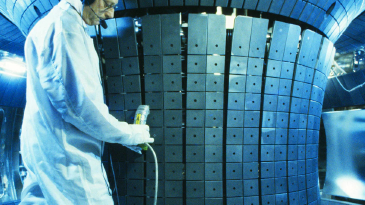Having been a systems integrator (SI) in the software business for almost 20 years now, I’ve seen just about every level of automation, network infrastructure and connectivity — ranging from none to highly modernized on process areas and assets. In most cases, there was a mixture of both situations in the plants.
The common reasons I heard for lacking connectivity were not always the same. For some, it was an asset that was remote or had no sensors, while for others it was an older programmable logic controller (PLC) with no communication capabilities or no controls at all. Regardless, in the early years the customer turned to the SI looking for the same level of access to their data from all assets.
In the late 1990s and 2000s there were SIs who loved the challenge and thrived on solving problems one by one. They were “industrial MacGyvers” figuring out how to make these connections work — even if it involved a solder gun and a small piece of custom code in Visual Basic (VB).
The real trouble back then was that most solutions were unique. If we were lucky, we could do a few using the same solution. Each solution typically included a unique manual and report and, in most cases, had to be serviced by the SI who originally implemented it. It was fun for the SI, but it was hard to support, not sustainable and definitely not scalable. All this, along with security, was rarely discussed back then, masking another level of complexity.
Flash forward to 2018, and we now have IIoT cellular-enabled edge gateways, wireless sensors, edge-based connection software and cloud computing — meaning if a customer has no infrastructure, it’s no problem! In a sustainable, cost-effective and scalable manner, we can now solve the issues of connecting remote assets, adding sensors where needed, bypassing older PLC issues and capturing the signals a customer requires.
In most cases, a solution can now be implemented in days instead of weeks. It can cost up to 70 percent less to implement an IIoT solution versus a costly rip-and-replace method to make it work, allowing us to focus on solving our customers’ real business problems rather than just overcoming the technical challenges.
Today’s IIoT technology and software present a completely new approach to delivering on our customers’ challenges. This means we can take valuable problem-solving tools and skills and, using IIoT, approach new customers in new industries that have traditionally lacked the infrastructure and connectivity needed to deliver the same value. IIoT employs problem-solving tools like machine learning that are industry-agnostic. Dealing with older assets is now easier — like a fountain of youth for aging assets! We can use IIoT to make older assets tell us new things.
All this change is not without its challenges. Moving into new situations that lack infrastructure means that today’s systems integrators need new skillsets and must understand networking and security along with their traditional knowledge base. They now need to be more than just the instrumentation and automation wizards they once were. They need to understand the IT side of the solution.
In the true spirit of loving what I do, when I look forward I get excited to see customers presenting more complex problems, demanding quicker results and more accurate reporting and all on their mobile devices. I say, “Game on!”
To learn how AspenTech can kick-start your IIoT initiative, check out the Aspen Connect family of solutions.






Leave A Comment